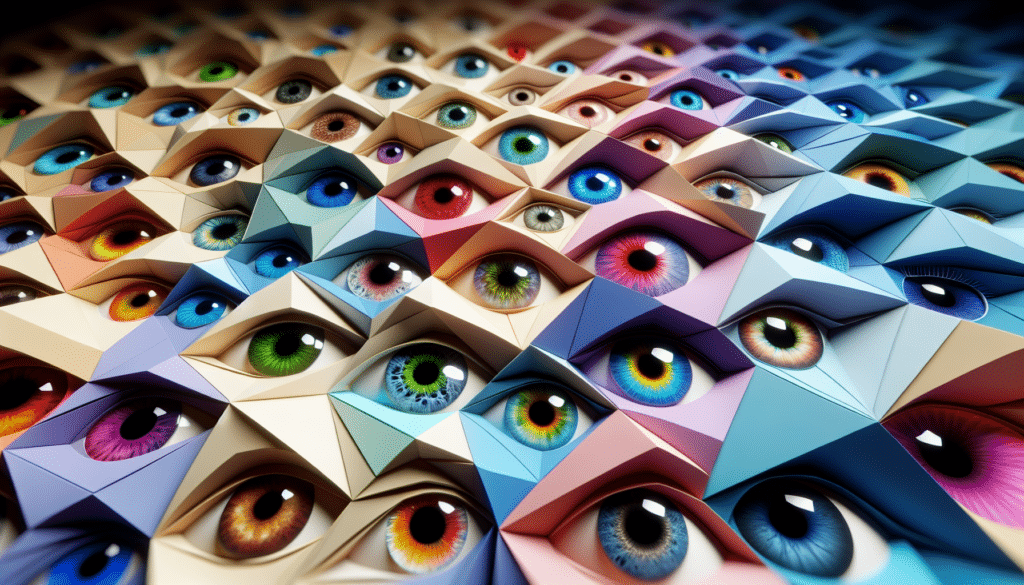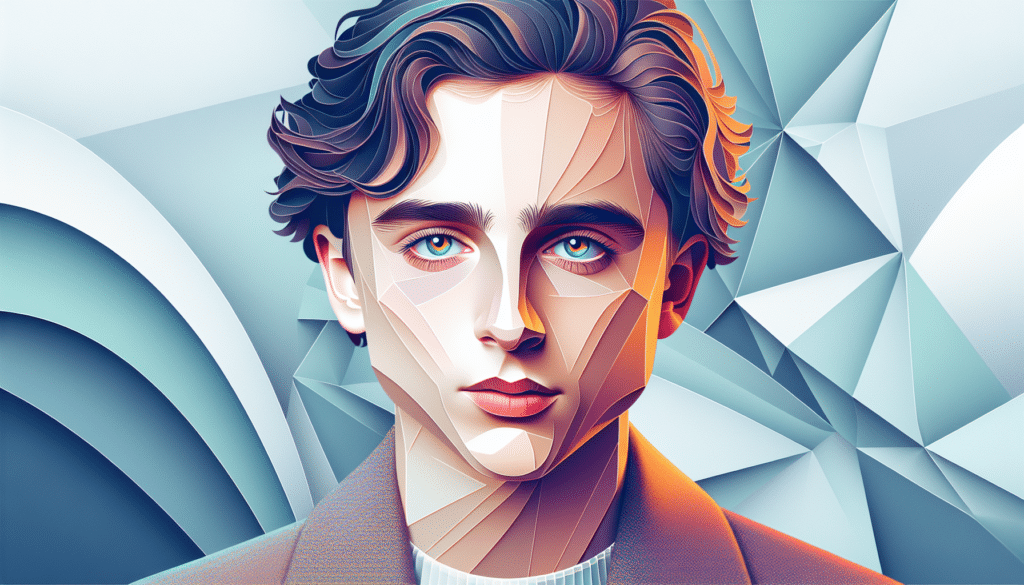Olivia Wilde’s Unique Eye Color
The Beauty of Central Heterochromia
Olivia Wilde’s eyes are nothing short of mesmerizing. She has a rare form of heterochromia called central heterochromia. This means her eyes have an icy blue ring around the pupils, with a darker blue on the outer edges. The contrast is simply stunning, creating a gaze that can draw anyone in. The darker outer ring of her iris adds an exotic touch, making her eyes unforgettable in any setting.
Her blue eyes pop even more against her dark hair, thanks to the contrast with the dark limbal ring around her iris. This combo gives her gaze depth and intensity, making her one of Hollywood’s most recognizable faces. Her eye color doesn’t just add to her beauty; it also plays a big role in her on-screen presence.
Olivia Wilde’s Mesmerizing Gaze
Olivia Wilde first caught our attention in the medical drama “House,” where her striking blue eyes were impossible to ignore. Her eye color is a unique blend of gray, dark blue, and hints of greenish-blue around her pupils, setting her apart from other actresses (Lensupermart, Eyecos).
Her gaze has become a signature part of her identity, grabbing attention in interviews, photo shoots, and on the red carpet. The way her eyes reflect light, combined with her central heterochromia, gives her a look that’s both distinctive and enchanting. Olivia Wilde’s eye color not only adds to her beauty but also highlights her unique character, making her a standout among celebrities with heterochromia.
Curious about other celebs with unique eye colors? Check out articles on David Bowie’s eye color and Mila Kunis’s eye color, who also share this fascinating trait.
Understanding Heterochromia
What is Heterochromia?
Heterochromia is when someone has different colored eyes or variations in color within the same eye. It’s a rare and often admired trait. Take Olivia Wilde, for instance. Her mesmerizing blue eyes with brown rings around the center are a perfect example of central heterochromia (Hopping Eye Associates).
Types of Heterochromia
Heterochromia comes in three flavors:
Complete Heterochromia: Each eye is a different color. Think one blue eye and one brown eye.
Partial Heterochromia: Two colors in one eye. Imagine a blue eye with a brown section.
Central Heterochromia: Different colors around the pupil. Like Olivia Wilde’s eyes, where the outer iris is a different color from the inner part (Savoir Flair).
| Type of Heterochromia | Description |
|---|---|
| Complete Heterochromia | Each eye is a completely different color. |
| Partial Heterochromia | Two different colors within the same eye. |
| Central Heterochromia | Varying colors around the pupil in the same eye. |
Heterochromia can be genetic or show up due to certain medical conditions. For Olivia Wilde, her unique eye color adds an exotic touch to her look, making her a standout in Hollywood. Her eyes draw you in, adding depth to her on-screen presence. Curious about other celebs with this cool trait? Check out the eye colors of Mila Kunis, David Bowie, and Kate Bosworth.
Olivia Wilde’s Eye Color Journey
Olivia Wilde’s eye color is a mesmerizing part of her look, but her hair color adventures have also played a big role in shaping her identity and the roles she’s snagged in Hollywood.
From Blonde to Brunette
Olivia’s tried almost every hair color under the sun—purple, green, red, blonde, dark blonde, black, and dark red. She’s talked about how changing her hair color can totally change how she sees herself (Into The Gloss).
Switching from blonde to brunette was a game-changer for her career. As a blonde, she often got cast as “the pretty girl” or “the sexy hot chick.” But when she went brunette, she started landing more complex roles, like “a waitress with a heart of gold” or “a doctor” (Into The Gloss). This shift let her show off her range as an actress and take on more interesting characters.
Hair Color and Roles
Olivia’s hair color has had a big impact on the roles she gets. Going brunette opened doors to more grounded, relatable characters, moving away from the shallow roles often linked to blonde hair.
She says her current hair color, a mix of brown with some blonde tips, feels the most like her. She believes that as people get older, they start to embrace their natural look instead of trying to be someone else. This acceptance shows her personal growth and helps her connect more deeply with her characters.
Olivia Wilde’s hair color journey has not only highlighted her unique eye color but also given her a fresh take on identity and self-expression in Hollywood. Curious about other celebs with unique eye colors? Check out the eye color stories of Mila Kunis and Kate Bosworth.
The Allure of Central Heterochromia
Olivia Wilde’s Mesmerizing Eyes
Olivia Wilde’s eyes are like a work of art. She has central heterochromia, where an icy blue ring circles her pupils, blending into darker blue hues at the edges. This unique combo gives her a gaze that can stop you in your tracks.
Her eyes pop even more against her dark hair and the prominent limbal ring, making the colors stand out. Fans and beauty buffs can’t get enough of her look, and her eye color is a big part of her charm as an actress and filmmaker.
| Eye Feature | Description |
|---|---|
| Inner Ring Color | Icy Blue |
| Outer Ring Color | Darker Blue |
| Heterochromia Type | Central Heterochromia |
The Magic of Heterochromia
Heterochromia, especially central heterochromia like Olivia’s, creates an eye-catching effect. The darker outer ring contrasts with the lighter inner ring, giving an almost magical look (Savoir Flair). This feature not only makes the eyes more beautiful but also adds a layer of mystery to the person’s gaze.
Olivia Wilde’s mix of gray and dark blue, with greenish-blue rings around her pupils, is a perfect example of how heterochromia can make someone stand out. People with heterochromia often find their unique eye colors become a memorable trait.
Other stars like Mila Kunis, Kate Bosworth, and David Bowie also show off the beauty of heterochromia, proving that unique eye colors add a special touch to the entertainment world.
Celebrities with Heterochromia
Heterochromia is a rare condition that gives people striking and unique eye colors. Many celebrities are known for their mesmerizing eyes that make them stand out in Hollywood.
Famous Personalities with Unique Eye Colors
Here are some well-known figures with heterochromia, showcasing its beauty and diversity:
| Celebrity Name | Eye Color Description | Type of Heterochromia |
|---|---|---|
| Olivia Wilde | Blue eyes with brown rings around the center | Central Heterochromia |
| David Bowie | One blue eye, one brown eye | Complete Heterochromia |
| Mila Kunis | One brown eye, one green eye | Complete Heterochromia |
| Kate Bosworth | One blue eye, one hazel eye | Complete Heterochromia |
| Alice Eve | One blue eye, one green eye | Complete Heterochromia |
| Max Scherzer | One blue eye, one brown eye | Complete Heterochromia |
| Henry Cavill | One blue eye, one slightly brown eye | Complete Heterochromia |
| Demi Moore | One dark brown eye, one green eye | Complete Heterochromia |
| Sarah McDaniel | One blue eye, one brown eye | Complete Heterochromia |
These celebrities show off the diverse beauty of heterochromia, enhancing their on-screen presence and making them memorable.
Embracing Eye Color Diversity
Heterochromia isn’t just a unique trait; it symbolizes individuality and diversity. Celebrities like Olivia Wilde, with her captivating mix of blue and brown eye hues, draw attention and admiration. Her distinct eye color, characterized by icy blue surrounded by a darker rim, enhances her striking features and adds to her allure (All About Vision).
The entertainment industry’s embrace of different eye colors highlights how unique features can contribute to one’s identity. Celebrities with heterochromia often use their distinct looks to stand out, representing the beauty of diversity in physical traits. For more about Olivia Wilde’s eye color, check out our section on Olivia Wilde’s Unique Eye Color.
With such a wide range of eye colors among famous personalities, it’s clear that beauty comes in many forms. Celebrating and appreciating the uniqueness that heterochromia brings is essential.



